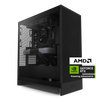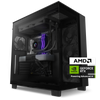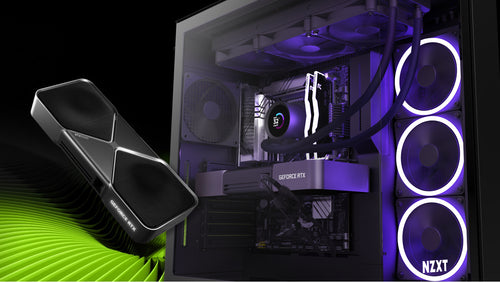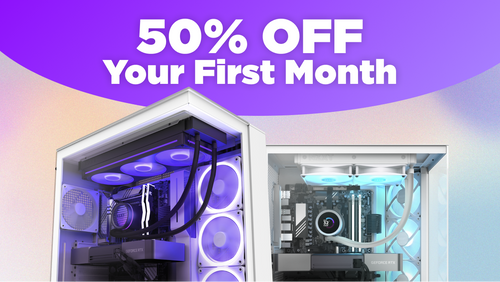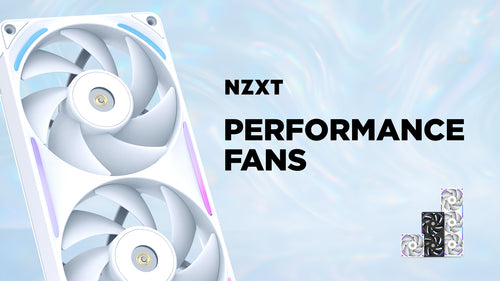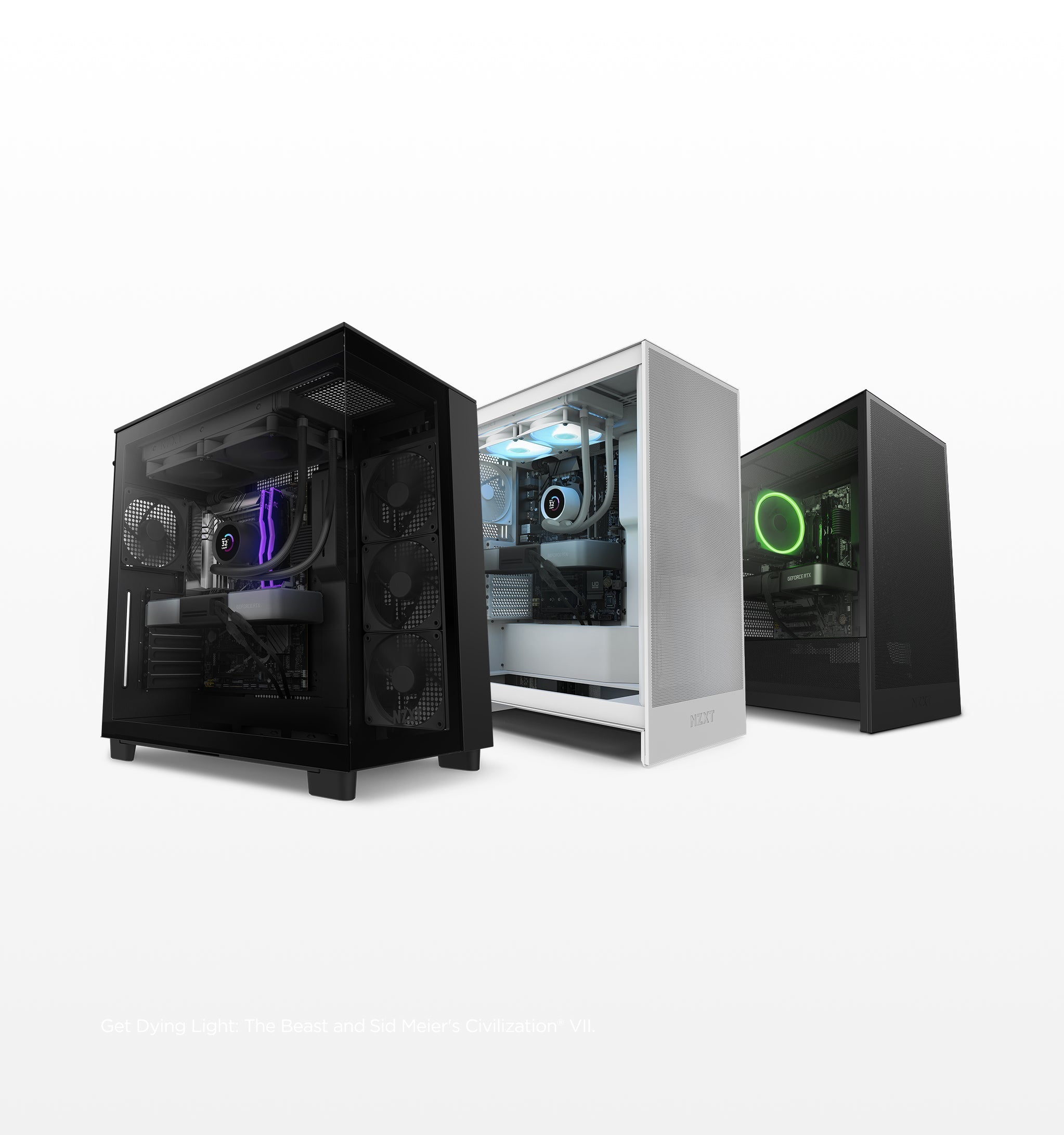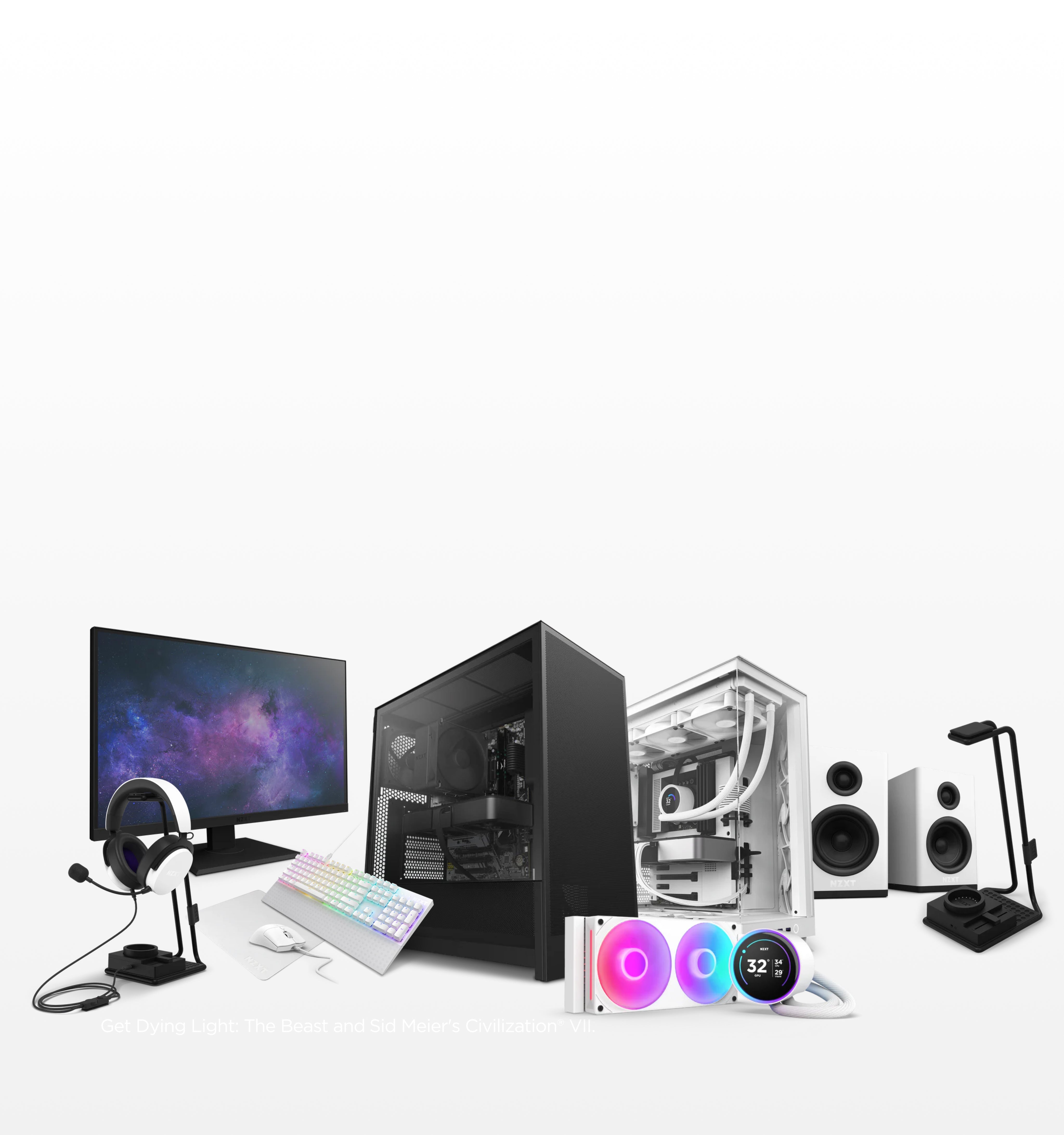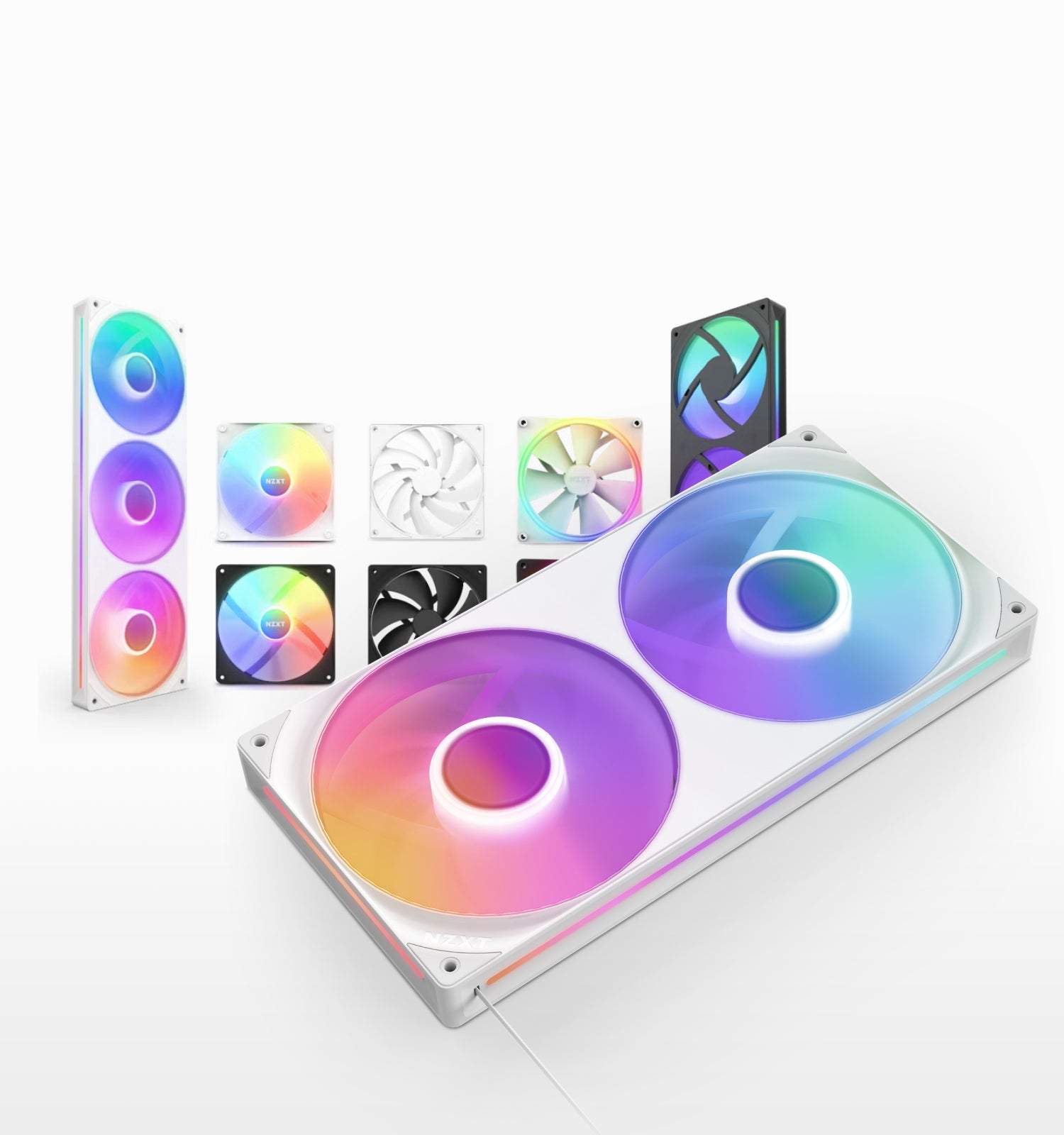Why You Shouldn't Use a TV as a Gaming Monitor

When it comes to gaming, it's hard to beat the immersive experience of giant screen size. Nowadays, you can get some pretty big flat-screen TVs for less than $300 that support 4K resolution. For the same price, a high-quality gaming monitor will likely run you about the same price for a much smaller screen size. Many gaming monitors don't even have built-in speakers, while TVs always do. So now, you'll also be shelling out even more for a headset or speakers. It almost feels like buying a dedicated gaming monitor for your first gaming PC doesn't make sense. So, why not just use a TV, right?
WRONG!
It might sound compelling, but this approach can severely bottleneck your PC gaming experience. We'll explain why a gaming monitor is worth the price, and why you shouldn't use a TV for PC gaming.
Why would you want to use a TV instead of a gaming monitor?
One of the main reasons people consider using a TV as a gaming monitor is budget. A big TV is relatively inexpensive compared to a high-quality gaming monitor. Unlike a monitor, most people will already have a TV in their house. If you're on a budget for your first gaming PC, utilizing a TV you already have is compelling. The money you save on buying a monitor could go into higher-end components for your gaming pc, like a better graphics card.
Another reason is former console gaming habits. When you're used to console gaming, normally, you're chilling on the couch, far away from the screen. But with a gaming monitor, you're only a few inches away from the screen.
Finally, a TV might feel better than a gaming monitor because of how much bigger the screen size is compared to what you get. You get a giant flat screen that supports the higher resolution for the same price.
All these points might seem valid, but it's important to understand why it's still the norm to opt for a gaming monitor.
What are the key features a gaming monitor offers?
Monitors, especially gaming monitors, are designed for PC users. They include key features that make it a more compelling buy than a TV. Here are the key reasons you should stick with a Gaming Monitor:
Refresh Rate
The refresh rate is the number of times per second that the monitor updates the image on the screen, measured in hertz (Hz). A higher refresh rate means that the image on the screen will be refreshed more frequently, making the image appear smoother and more fluid, especially in fast-paced games.
High-quality pc gaming monitors usually have refresh rates between 120Hz and 240Hz. The most optimal experience is usually at 144hz or higher. At a refresh rate of 144 Hz, or higher, you have a much smoother visual experience with less motion blur.
In comparison, TVs in the same price range will often have a refresh rate of 60hz or less. This means when playing fast-paced games, like racing games or FPS titles, you'll experience stuttering and a laggy feeling. A lower refresh rate can make the difference between winning or losing because it can make it harder to aim or react. Even if you're not playing competitively, this can make the overall experience less immersive.
#### FPS
You're also bottlenecking your FPS (frames per second) by playing on a TV instead of a gaming monitor. FPS measures how many images the game can render in a second. As we mentioned, the refresh rate determines how many times the monitor can update the image per second. One of the biggest benefits of a better graphics card in a PC build is supporting a higher FPS. So if you're gaming at 120 FPS, but using a 60 Hz refresh rate TV, you're bottlenecking your experience because the TV can only display 60 images per second.
Also, when the FPS is higher than the refresh rate, it often causes screen tearing. Screen tearing results in jagged and split images, making the experience almost unplayable. That means you'd need to turn on v-sync in the game settings, which limits your FPS to what your TV can handle.
##### VRR, Nvidia G Sync, and AMD FreeSync Compatability
A lot of the time, when you're playing games, your FPS will fluctuate. For example, you'll often have a higher FPS during combat than in exploration. In the previous section, we discussed what happens when your FPS is higher than your refresh rate. But, having your FPS lower than your refresh rate can be equally detrimental to a smooth, immersive, PC gaming experience. When your gaming display tries to update the images on the screen more frequently than the frames are being produced, it can result in the display trying to repeat the same frame multiple times. This phenomenon is known as the stuttering effect. Stuttering is especially prevalent when going back and forth between a higher & lower FPS.
Because your FPS is variable, many gaming monitors support a variable refresh rate (VRR). The most common technology for this is Adaptive Sync, Nvidia G Sync, and AMD FreeSync. When a gaming monitor is G Sync compatible, or FreeSync compatible, it syncs with your graphics card to ensure the refresh rate matches your FPS. As you might guess, unlike a gaming monitor, most TVs aren't equipped with this technology.
##### Displayport Support
Most people will know what an HDMI cable is, but for PC gamers - DisplayPort is the real champion. DisplayPort, like HDMI, is a display cable that supports high-definition audio and video. However, DisplayPort can transmit more data at a much faster rate compared to HDMI. Because of this, it can support a much higher refresh rate and resolution than HDMI ports.
Many modern graphics cards and gaming monitors support DisplayPort 1.4, which has a transmission rate of up to 32.4 Gbps. This technology can deliver 1080p @ 240Hz, 4k @ 120 Hz, and 8k @ 60Hz. DisplayPort 2.0, expected on the next generation of gaming monitors and graphics cards, will have more than double the transmission rate - up to 80 Gbps. This new technology will deliver 4K resolutions @ 240Hz, 8K @ 85 Hz, and even support 16K Resolution in the future - crazy!
The latest HDMI technology, HDMI 2.1, is the closest competitor to DisplayPort. It supports a transmission speed of 42.6 Gbps, which can deliver 4k @ 144Hz or 8k @ 30 Hz. The latest generation of graphics cards will have HDMI 2.1 support, but you won't see it on many gaming monitors or TVs until you get into a high-end price range. Aside from HDMI 2.1, DisplayPort is the best option for delivering a high resolution and refresh rate.
Unfortunately, most TVs do not have DisplayPort adapters, only HDMI connectors. Cheaper TVs often support HDMI 1.4, which can only deliver 1080p at a decent refresh rate. If you're gaming in 4K, you'll be bottle capped at a 30Hz refresh rate - making the experience almost unplayable. If the TV supports HDMI 2.0, there will be a marginally better experience for 4k gaming - delivering up to a 60 Hz refresh rate.
Input Lag & Response Time
When it comes to gaming performance, you want the experience to feel as fluid as possible. However, there will always be input lag; input lag refers to the amount of time it takes for an action (like clicking on your keyboard, mouse, or controller) to be reflected on the screen. Input lag directly correlates to your screen's response time. The response time refers to the amount of time it takes for a pixel to change from one color to another, and it's usually measured in milliseconds (ms). A low response time will lead to less input lag, which is incredibly important in fast-paced games where reaction time is important.
High-quality gaming monitors have extremely low response times, usually under 1 ms, which means low input lag. Low input lag enables you to have an almost instantaneous reaction time. This is enough of a competitive edge in many games to determine the difference between winning and losing.
On the other hand, most TVs have a much higher response time because they aren't optimized for gaming. Many TVs in the same price range of gaming monitors can have a response time of 6-8 ms but can go as high as 20 ms depending on the quality of the TV. This high response time can cause motion blur and high input lag.
Color Accuracy
A good graphics card for your gaming PC can result in gorgeous, high-resolution image quality. When you play games with a beautiful open world, like The Witcher 3 or Red Dead Redemption 2, a cinematic experience helps immerse you much better. Aside from resolution, a big part of that experience is the display's color accuracy.
Gaming monitors are designed with color accuracy and color reproduction in mind, and often have advanced color technologies and settings that allow for accurate and consistent color reproduction. They are calibrated in the factory for accurate color representation, which allows for excellent color accuracy for gamers who work with graphics and want to ensure that the colors they see on the monitor are accurate. A high-quality gaming monitor usually comes equipped with HDR (High Dynamic Range) technologies that allow for a broader range of colors and brighter whites and blacks, providing a more immersive gaming experience.
On the other hand, TVs are generally designed for various uses. While they may have advanced color technologies and settings, they may not be calibrated as well as gaming monitors, and the color accuracy can vary widely between models and manufacturers.
Better Viewing Experience
When gaming, it's extremely important to see everything clearly without experiencing a loss of image quality or color distortion. For this reason, you'll usually want a wider viewing angle. Gaming monitors support a wider viewing angle than TVs, meaning you can move around and adjust your position while sitting without affecting your experience.
Many gaming monitors will also come equipped with anti-glare coatings and other technologies to help improve visibility in a room with ambient light. So if you have a lot of sunlight through your curtain, you'll have better visibility than a TV.
Finally, because you're closer to the screen with a monitor, you'll have a much easier time reading elements on the screen. Many games on PC have in-game chatting features for communication or smaller icons in the overlay. Trying to view these farther away with a TV can make you miss important things happening in the game. Some games provide the option to increase the space the overlay takes, but you'll have less space for seeing the game. It's impossible to mimic this with a TV without straining your neck to look up at the larger screen.
Support for Non-Gaming Activities
Arguably, one of the most underrated benefits of a PC compared to a gaming console is support for non-gaming activities. The farthest a console can go beyond gaming is usually home entertainment. With a powerful gaming PC, you'll unlock nearly unlimited possibilities of what you can do with it. Between hobbies, studying, or even developing useful skills for career development, a PC is multi-functional. Check out our post for a list of some cool things you can do on a Gaming PC besides gaming.
You can't take advantage of much besides gaming when using a TV because of how far away you'll typically be from the screen. While many PC games can be played on a controller, anything else will need a mouse or keyboard. Using a mouse and keyboard far from the screen can feel pretty awkward. On top of that, as discussed previously, the size of text and icons on the computer might make it cumbersome to do even simple tasks like writing in a word document or spreadsheet.
Some TVs Can Have These Benefits, but They Are More Expensive
This isn't to say all TVs are horrible. As gaming has become a more in-demand form of entertainment, TVs are starting to adopt many of the monitor benefits we discussed previously. Every year, the line between a gaming monitor and a TV becomes blurry.
However, TVs that support higher refresh rates, response times, HDR, DisplayPort, etc., will exceed over $1000 in costs. Sometimes, these gaming TVs can be more expensive than your gaming pc! Comparatively, most mid-range gaming monitors will land under $400. Even higher-end gaming monitors usually won't go above $750, without additional features like being an ultrawide gaming monitor. Getting a Gaming TV is counterintuitive to any budget savings.
What are the Best Gaming Monitors I can Buy?
There are a ton of great gaming monitor deals out there. It's hard to say the best gaming monitor because it depends on your budget and what you're looking for. Most gaming monitors tend to be cheap or extremely overkill. At NZXT, we created a line of high-performance mid-range monitors: our Canvas Q Series and our Canvas F series. All our monitors come equipped with HDR support, high refresh rates, 1ms response time, anti-glare coating, and AMD FreeSync Premium.
Canvas 32Q - Our Curved, QHD Gaming Monitor
The Canvas 32Q Curved gaming monitor is balanced for any game in your library with vivid Quad-HD resolution, a fast 165Hz refresh rate, and an immersive edge-display display. Get an even broader field of vision with a captivating 1500R curved display.
Immersive QHD (2560x1440) resolution brings fine details to life
165Hz refresh rate for blur-free gameplay
1ms response time provides smooth visuals
HDR10 creates rich, contrasting environments
Ultra-thin bezels provide an immersive edge-to-edge picture
AMD FreeSync Premium
CAM software makes it easy to customize your Canvas experience
Anti-glare allows for versatility in high or low-light spaces
Flicker-free display with low blue light means less eye-straining for marathon game sessions
1500R curvature - 20% greater curvature than standard (1800R) curved monitor for improved immersion
Canvas 27Q - Our Sleek, Flat Panel Gaming Monitor
The Canvas 27Q gaming monitor is balanced for any game in your library with vivid Quad-HD resolution, a fast 165Hz refresh rate, and an immersive edge-to-edge display.
Immersive QHD (2560x1440) resolution brings fine details to life
165Hz refresh rate for blur-free gameplay
1ms response time provides smooth visuals
HDR10 creates rich, contrasting environments
Ultra-thin bezels provide an immersive edge-to-edge picture
AMD FreeSync Premium
CAM software makes it easy to customize your Canvas experience
Anti-glare allows for versatility in high or low-light spaces
Flicker-free display with low blue light means less eye-straining for marathon game sessions
Canvas 25F & 27F - Our High Refresh Rate Gaming Monitors
Canvas 25F & 27F monitors allow users to play at their best in a competitive environment with high-speed, blur-free gameplay. Fit Canvas seamlessly into an existing ecosystem of stylish NZXT products with a sleek, bezelless setup perfect for a multi-monitor configuration.
FHD (1920x1080) resolution
1ms response time
VESA DisplayHDR™ 400
Ultra-thin bezels
AMD FreeSync Premium
CAM software
Anti-glare
Flicker-free
Low blue light
Our Gaming Monitor Arms
A fully flexible monitor Arm allows for simple cable management and a small spatial footprint, allowing users to free up desk space and make room for peripherals. The NZXT Arm has two versions to accommodate single and dual monitor setups.

